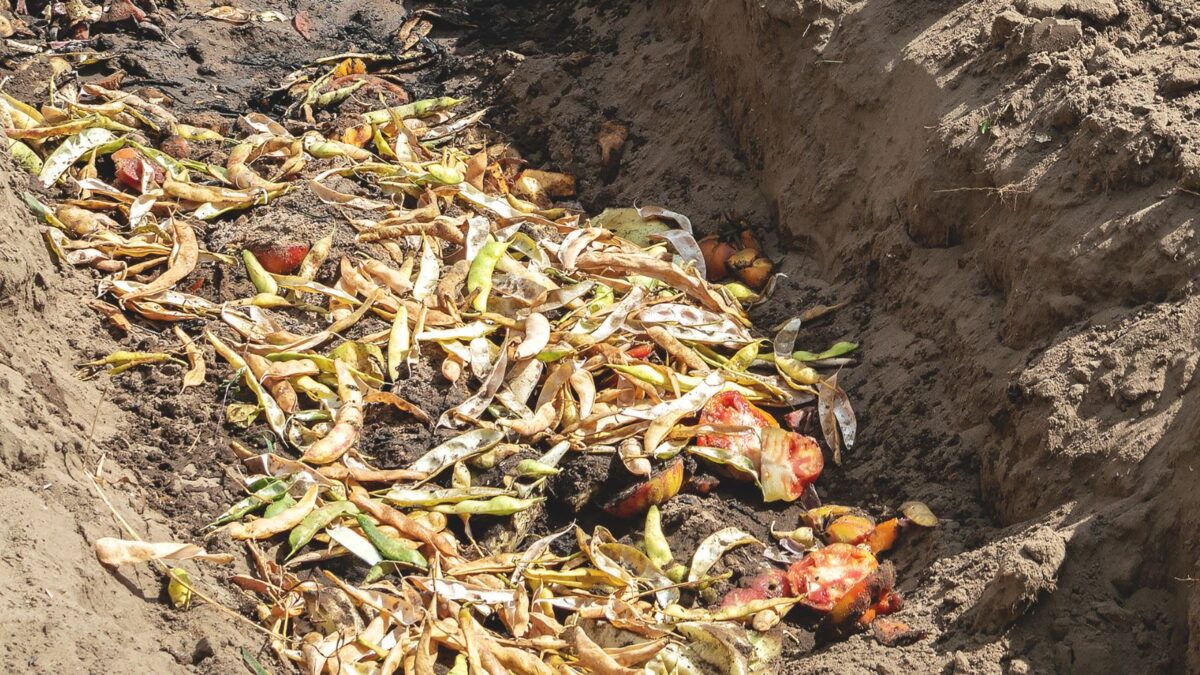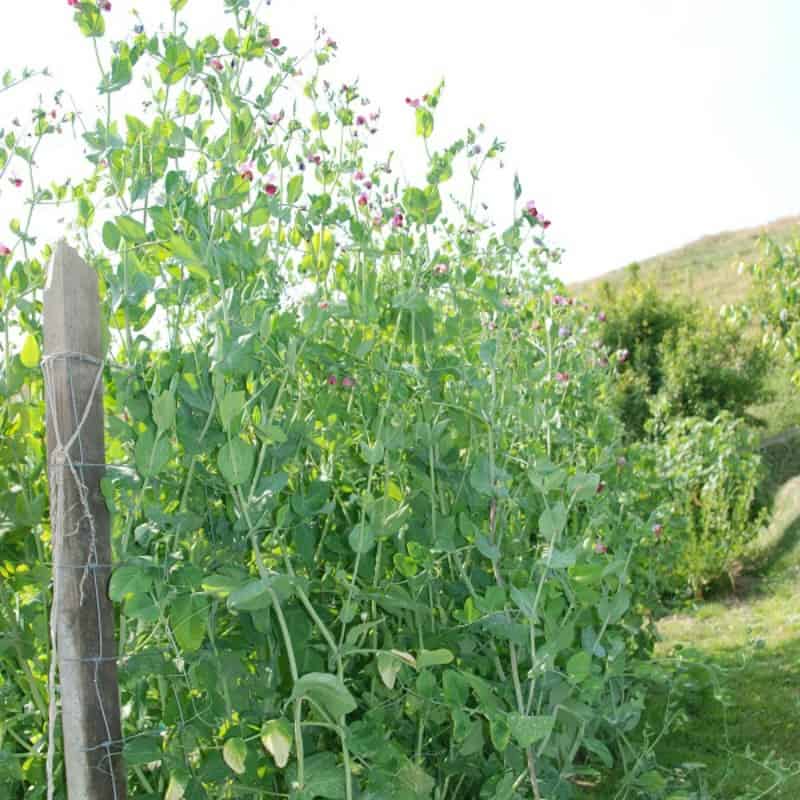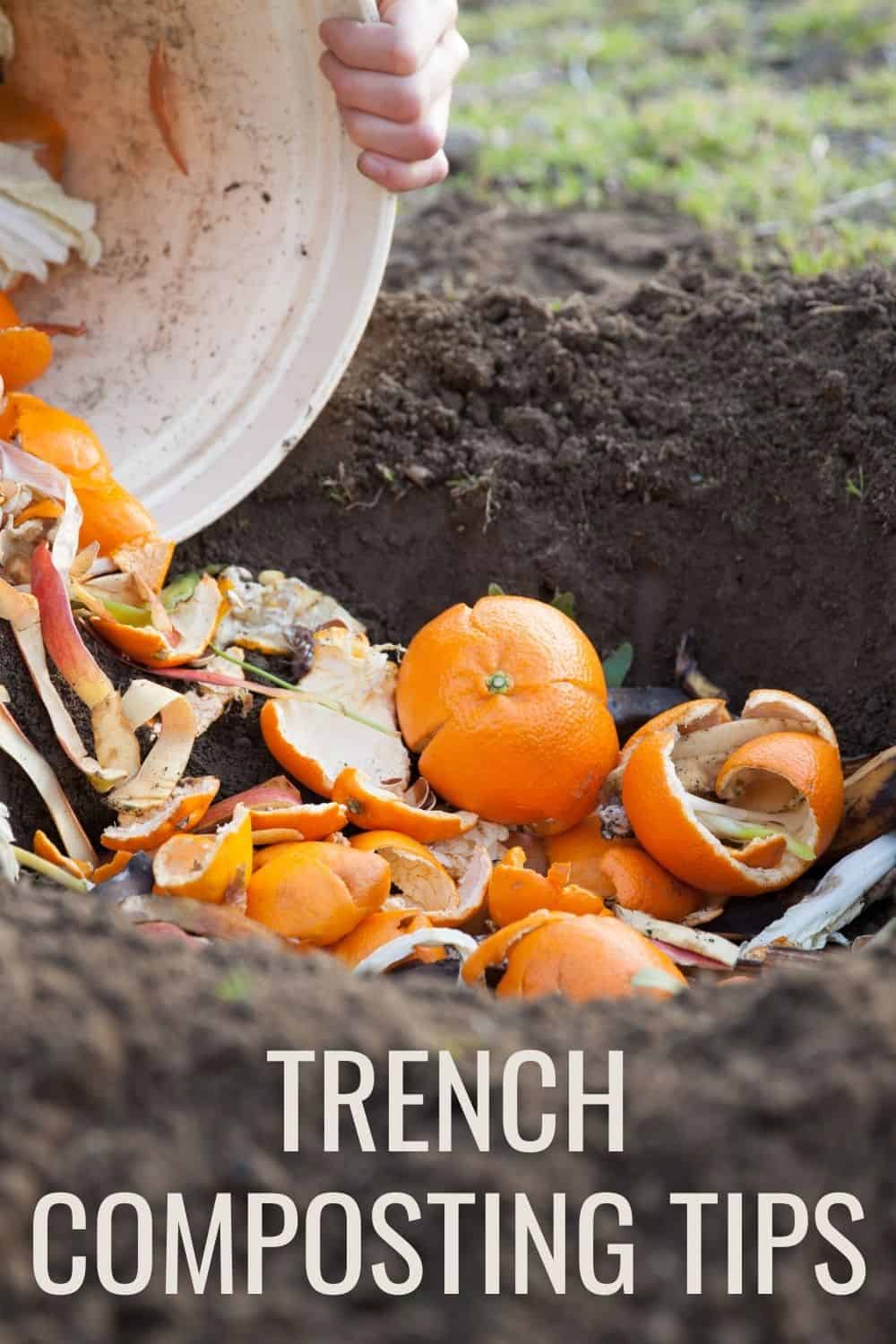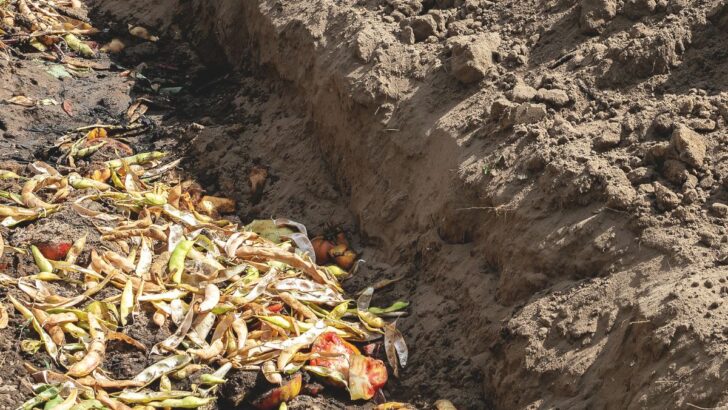Composting for a vegetable garden by using the trench method has a lot of advantages. It is also one of the easiest ways to utilize your organic waste. Using trench composting for gardening is very simple.
All you need to do is dig a trench or hole about a foot deep, fill it half full with kitchen and garden waste, and fill it back with soil. You can put kitchen scraps and other organic matter in here instead of throwing them in the garbage. It’s a great way to reduce waste, and also to get back something from the waste. Let’s take a deeper look at how this works.

How To Use Trench Composting For Garden Success
Why do you want to use trench composting for your garden? While there are other ways to compost, there are some great benefits to doing it with a trench. This way of recycling waste not only keeps odors locked away but also provides nutrition for plants deep in the soil. This will help with root formation and the overall health of your vegetables.
Most gardeners are familiar with the concept of composting, but they may be doing so in compost bins. Whether you use one bin or a three-part bin system, trench composting may be better for your needs.
Instead of a compost bin, you can dig a trench and put food waste and other organic material in here rather than in a compost bin or a bag to get picked up by your garbage removal company.
Although it is known as trench composting, this term only loosely describes the method. In practice, you could use a zone or rotation system.
Trench composting for a vegetable garden is simply the act of burying waste. To follow the zone system, choose an area in your vegetable plot to bury your waste. Then, swap the burying area every season.
Some people call it the “lazy man’s method” of composting because it’s so easy to do.
- Do you need a deep hole?
- How big or wide should it be?
- Are there food scraps you shouldn’t put in your compost trench?
I know you probably have many questions (I did, too), so I’m going to break it all down for you.
So, let’s look at the basics of trench composting for successful gardening.
Trench composting (also known as pit composting) for vegetable gardening
So, how do you set up this system to use trench composting? The trench rotation system is simple. You just need to add a trench-burying task to your garden’s rotation plan.
Split your garden into three areas, and every year, choose one area to trench compost, moving it every year. After three years, your garden will all be composted, and you can start over again.
Introduce trench composting into your rotation plan by putting your trenches under beans and peas. Line the trenches with newspaper to help retain water and create a perfect environment for your beans and peas to perform well.
Here are our peas growing in a composting trench.

When the plants are done for the season, cut them off at soil level to allow the nitrogen-filled roots of the used bean plants to rot and release their valuable nutrients into the soil.
Beans and peas are often referred to as green manure, so when you use the trench method of growing, not only will you be adding the contents of the trench to the ground, which will rot to add to the soil structure and goodness, but you will also be adding the nitrates from the beans. This way the next veggies in your rotation plan will have double the benefit 😉
Tip: after growing beans in the composting trench, plant cruciferous vegetables for a bumper crop. The high nitrogen levels left from the beans will feed the brassicas and encourage good growth and production.
Trench composting – setup
First, how deep do you dig the hole for your compost trench? Generally, it should be about one foot deep (12 inches deep). It won’t be deep enough if you only dig down six inches of soil. As far as area, this depends on how much organic matter you want to be able to drop into it. You can go wider and longer if you know you have a lot to put in it.
While we call it a “trench,” you can really make it any shape you want. It’s totally up to you. Rows of trenches tend to make sense in between garden rows or at the end of a row, but you can do other shapes as it suits your needs. That part doesn’t impact how it works for you.
Where do you put your compost trench? The answer can vary, but a good place to put it is where you plan to set up a garden in the future, or you can also put it in between rows of existing garden beds, vegetable beds, or even flower gardens.
One downside to this method is if you live in an area that gets cold, it can be difficult to dig holes when the ground freezes. If you have a tool that makes this easier, it might not hold you back. Another option is to use a compost pit in the winter months or prepare your trenches before the first hard freeze.
Trench composting – what things you will need
What kinds of things do you need to get started with trench composting?
Well, the easy answer is that you need compostable materials to put in it. You will also need tools to dig the hole/trench, but that’s it. It’s that simple! If you want to make organic compost, you can use things that you likely already have on hand. You can use green materials like grass cuttings, brown materials, and other yard waste. You can also use some food waste items.
Here are some compost materials you can use:
- Yard waste like weeds and grass clippings or dry grass
- Garden waste like dead flowers, old leaves
- Other plant materials from weeding, cut fields, etc.
- Crop residues like stems, leaves, vegetable scraps, and herbs
- Waste from cleaning grain, making food, cooking, coffee grounds, eggshells, etc.
- Dry grass, hay, and straw left over from farming, animal bedding, and more
- Remains from bird cages, rabbit or hamster cages, etc.
All of these things are good composting materials, but there can be much more beyond what I’ve listed here. Some people even bury meat or dairy in small amounts. If you try this, don’t use too much at one time. You can’t use them at all in traditional compost piles so that’s another advantage of using the trench style.
Trench composting – why is it important for the soil?
What is the benefit of trench composting? It can be very good for your soil, but let’s look at some reasons why.
- It helps the soil in your garden and your yard hold water
- It helps prevent compacted soil
- It improves the organic matter in the soil
- It makes trace elements (micronutrients) readily available to the new plants
As the materials break back down into the earth, it feeds the soil with all of these benefits. It contains the key plant nutrients, NPK – nitrogen, phosphorus, and potassium.
Pit composting FAQ
Does trench composting attract worms?
Absolutely! The compost in the trench will nourish the soil, which in turn will attract earthworms.
Does trench composting attract rats?
It can if you don’t dig your trench deep enough. But if you dig about 1 foot deep, cover your scraps, and press the dirt down every time you add to your trench, that should keep the rats at bay.
What is the fastest way to dig a trench?
The fastest way to use the trench composting method is to dig a hole every time you have fresh kitchen scraps to compost. Just dig a 12″ hole, dump your scraps, and cover the hole: it’s that simple!
Are there any downsides to trench composting?
Yes, there are a couple of things you might call downsides: having to dig a hole every time you need to dispense of chicken scraps and yard debris. Also, you need to wait for those scraps to be completely decomposed before adding more scraps to that spot.
Trench Composting Conclusion
As you can see, this is a great method of composting that also brings many benefits to the soil of your garden and lawn. It gives the soil nutrition right where it is needed and this will help your garden or lawn to be healthy as well. And you don’t even have to do anything to maintain it, so it’s one of the easiest ways possible to do composting. All you need to do is make your trench, put your compost in, and wait.
Here are some other methods of composting, as well as tips on building a wormery and creating organic compost. So, what are you waiting for? Get started today!




Alina
Wednesday 28th of August 2024
Uau, Adriana, super website! Congrats!
How To Compost Wood Chips Fast
Tuesday 14th of February 2023
[…] Trench composting […]
How To Grow Runner Beans For A Rich Harvest
Wednesday 2nd of December 2020
[…] To start a bean trench, collect kitchen waste and newspapers during the autumn. Then dig the trench as long as you want it, one spade deep and two spades wide. Line it with newspaper. Fill the trench with the kitchen waste you have collected, and cover it with soil. Let it rest over the winter. This is also called trench composting. […]
Sue Fletcher
Thursday 27th of June 2019
Would this attract bears? Would they smell it and dig it up?
ILoveGardening
Monday 1st of July 2019
Not if you do it as suggested above (cover it with soil as you dd more scraps)
How To Plan A Vegetable Garden - Step By Step Instructions
Wednesday 6th of February 2019
[…] we dust the trench with fish, blood and bone fertilizer, line them with newspaper, back fill with kitchen waste (no meat or dairy included) and cover with […]